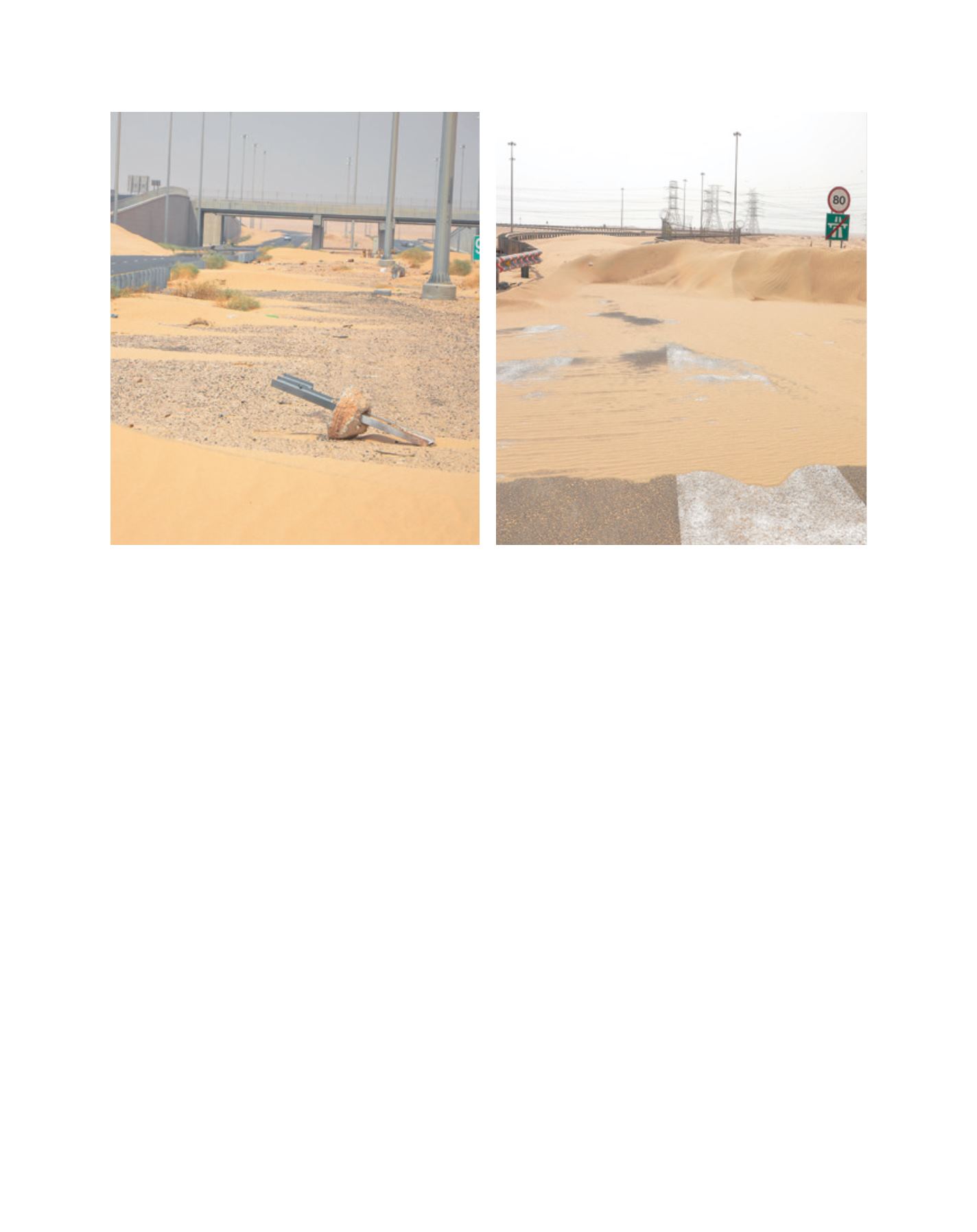

[
] 82
In the last few years, several types of eco-friendly
materials have been successfully used to control shifting
sands, such as ecomat and coir mats. Ecomat is envi-
ronmentally friendly mulching mat, fully biodegradable
and made from 100 per cent natural oil palm residues.
These residues supply nutrients to both the soil and the
plants. The ecomat contains elements such as Potassium,
Magnesium and Nitrogen which enhance soil quality and
plant growth. Ecomat was tested in Kuwait in the Burgan
oil field, Kabd and at sites in Al-Liyah.Coir mats are 100
per cent biodegradable mulching blankets made up of coir
products. These mats are fast binders of soil. They provide
an excellent medium for quick vegetation, holding seeds
and saplings in place. The mats are excellent for air and
water permeability. This product was tested at the Burgan
oil field.
Three scenarios are proposed to manage the hazards of
shifting sands in the terrestrial environment of Kuwait.1
The first scenario is the establishment of two green belts,
each with at least 10 rows of
Prosopis juliflora, Ziziphus
spina christi
and
Tamarix aphyllae
trees. The first belt (25
km length) is in the Al Huwaimiliyah area and the second
(130 km length) is at Ras As Sabiyah-Al Salmi. The selec-
tion of sites for the two belts is based on information gained
through field surveys and remote sensing imagery inter-
pretation of the area. The aim is to stabilize active sandy
bodies between the two belts as well as some active bodies
in the south, using environmentally friendly materials such
as ecomat, coir and plant residues.
The second scenario involves afforestation, specifically
the plantation of
Prosopis juliflora, Zizpiphus spina christi
and
Tamarix aphyllae
trees along the Huwaimiliyah-Al
Wafra corridor. The areas proposed for afforestation cover
about 615 km
2
. Treated sewage water has the potential to
be used to irrigate these plantations for at least one year.
The scenario also includes the revegetation of native shrubs
such as
Haloxylon salicornicum
and
Rhanterium epapposum
which are very effective in trapping shifting sands, and the
stabilization of active sandy bodies along segments of the
Huwaimiliyah-Al Wafra corridor using greenery residues of
Abdaly, Kabd, Wafra and urban areas in Kuwait (recycling
of greenery residues).
In the third scenario, green belts will be established in the
northern and central parts of Kuwait. In southern parts, there
will be revegetation of native plants such as
Rhanterium epap-
posum
. There will also be immediate stabilization of active
sandy bodies and local sources of dust using greenery residues
and mulching sheets such as ecomat and other environmen-
tally friendly mulching materials
The cost, efficiency and environmental sustainability of the
proposed scenarios should be assessed by a multidisciplinary
team of experts. For the final design of the green belt, wind
tunnel experiments will be conducted and the most cost effec-
tive and environmentally sound scenario will be selected.
Case study: Kuwait’s highways
The main threat facing most of the development facilities and
public utilities in the Kuwaiti desert is the sand encroachment
problem. Military camps, air bases, oil fields, agricultural
areas, animal production facilities and desert highways are
severely influenced by shifting sand. Managing the sand
encroachment problem along highways will secure safe and
Two field photos showing severe sand encroachment along Sabiyah Road
Images: National Committee for Combating Desertification in Kuwait (EPA Kuwait,2015)
L
iving
L
and
















